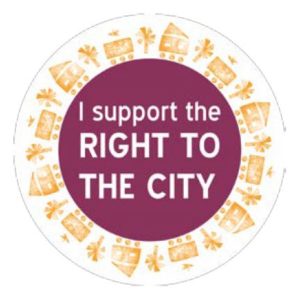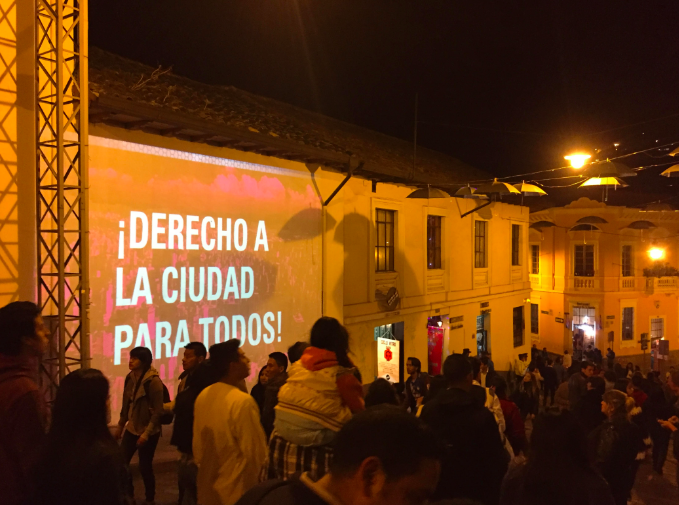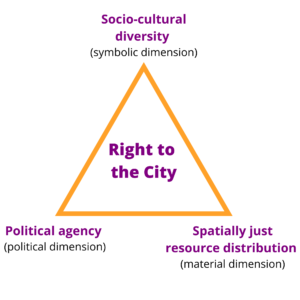What is the Right to the City?

The Right to the City is the right of all inhabitants, present and future, permanent and temporary, to inhabit, use, occupy, produce, govern and enjoy just, inclusive, safe and sustainable cities, villages and human settlements, defined as commons essential to a full and decent life.
The Right to the City is a collective right that highlights the territorial integrality and interdependence of all internationally recognized civil, political, economic, social, cultural and environmental rights, as regulated in international human rights treaties, bringing them the territorial dimension and a focus on adequate life standards.
Why the Right to the City?
 At the heart of the Right to the City is the vision of decentralized, inclusive and sustainable cities and human settlements that ensure job opportunities, health, education, leisure and culture for all its inhabitants.
At the heart of the Right to the City is the vision of decentralized, inclusive and sustainable cities and human settlements that ensure job opportunities, health, education, leisure and culture for all its inhabitants.
Under the current global model of urban development, informed by neoliberal ideas and institutions that enrich economic interests at the expense of communities and social bonds, we are seeing several interrelated crises; the commodification of urban land, which is being stolen from the public and communities; the gentrification of traditional and popular neighbourhoods; the privatization of collective spaces; and the use of public funds to promote major infrastructure for the rich.
The Right to the City shifts the focus of our cities away from being playgrounds for capital and profit, and towards being living social, political, and indeed economic entities. By reclaiming urban spaces as collective places for people, by people, we can prevent the marginalization, criminalization and expulsion of large sectors of the population from our cities.
What are the main ideas behind the Right to the City?

Cities and human settlements are multifaceted entities which cannot be reduced to their material dimension (i.e. physical qualities such as buildings, streets, infrastructure and so on). Rather, they are made up by and result from ideas (their “political dimension”) as well as social values (their “symbolic dimension”).
Understanding cities and human settlements as complex phenomena, the Right to the City builds on three interdependent ideas, or ‘pillars’.

